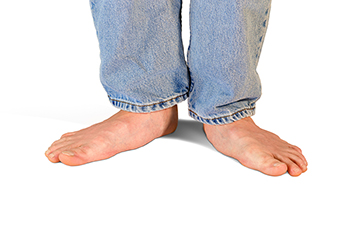
Flat feet are not all the same. Some are flexible, while others are rigid. Understanding the difference is key to managing symptoms and preventing discomfort. Flexible flat feet appear when standing but form an arch when the foot is lifted or when standing on tiptoes. This type is often painless but can cause fatigue, aching arches, or ankle instability over time. Fixed flat feet remain flat regardless of position. The arch does not reappear when standing on tiptoes, signaling a more rigid structural issue. This type is more likely to cause chronic pain, stiffness, and difficulty with movement. The tiptoe test helps differentiate the two types of flat feet. If an arch forms when rising onto the toes, it is flexible. If not, it is likely fixed. If you have flat feet that causes persistent pain or mobility issues, it is suggested that you see a podiatrist for evaluation and treatment options.
Flatfoot is a condition many people suffer from. If you have flat feet, contact Judson Siegel, DPM from Assabet Family Podiatry. Our doctor will treat your foot and ankle needs.
What Are Flat Feet?
Flatfoot is a condition in which the arch of the foot is depressed and the sole of the foot is almost completely in contact with the ground. About 20-30% of the population generally has flat feet because their arches never formed during growth.
Conditions & Problems:
Having flat feet makes it difficult to run or walk because of the stress placed on the ankles.
Alignment – The general alignment of your legs can be disrupted, because the ankles move inward which can cause major discomfort.
Knees – If you have complications with your knees, flat feet can be a contributor to arthritis in that area.
Symptoms
- Pain around the heel or arch area
- Trouble standing on the tip toe
- Swelling around the inside of the ankle
- Flat look to one or both feet
- Having your shoes feel uneven when worn
Treatment
If you are experiencing pain and stress on the foot you may weaken the posterior tibial tendon, which runs around the inside of the ankle.
If you have any questions please feel free to contact our offices located in Plainville, Marlborough, and Somerset, MA . We offer the newest diagnostic and treatment technologies for all your foot and ankle needs.
